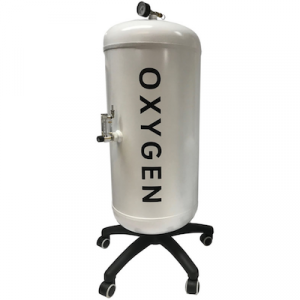
Agriculture
February 29, 2024
Oxygen Reservoir System
Read SolutionImplemented by
Diamedica
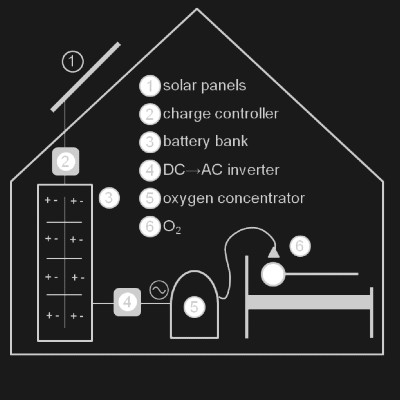
Updated on February 27, 2024
·Created on August 31, 2021
Solar-powered oxygen delivery system. Courtesy of WHO Compendium 2021
The solar-powered oxygen delivery (SPO2) system consists of a commercially-available oxygen concentrator, charge controller, battery bank, and solar panels to provide medical-grade oxygen from ambient air without the need for reliable grid access. The systems are custom designed by Dr. Michael Hawkes at the University of Alberta and his team for each location and can switch between grid connectivity to battery power as necessary during power outages.
This product was selected for inclusion in WHO’s 2021 Compendium of Innovative Health Technologies for Low‐Resource Settings.
Target SDGs
SDG 3: Good Health and Well-Being
Market Suggested Retail Price
$10,000.00
Target Users (Target Impact Group)
Public Sector Agencies, NGOs
Distributors / Implementing Organizations
Solar oxygen currently partners with local suppliers, contractors, and development agencies to build and implement the systems.
Competitive Landscape
Direct competitors include FREO2-SIPHON.
Regions
Africa
Manufacturing/Building Method
System components are commercially available with custom system design and implementation provided by Solar Oxygen.
Intellectural Property Type
Trademark
User Provision Model
Available through direct sales by contacting Solar Oxygen.
Distributions to Date Status
As of October 2020, fewer than 100 units have been distributed.
Design Specifications
The solar-powered oxygen delivery system converts ambient air into medical-grade oxygen using commercially available oxygen concentrators, charge controllers, battery banks, and solar panels. This system, customized for each location of implementation, collects solar energy during the day through solar panels and stores excess power in batteries (72 hours of power at full charge). Through this system, oxygen is produced, drawing power from the grid when possible and switching to solar/battery during outages.
Technical Support
Locally trained technicians
Replacement Components
Filters and sieve beds are available separately.
Lifecycle
5-10 years
Manufacturer Specified Performance Parameters
The manufacturer specified performance targets include reliability, affordability, flexibility, ease of use, and maintenance.
Vetted Performance Status
An initial pilot and randomized control trial at two sites in Uganda provided a proof-of-concept and met the criteria for noninferiority to traditional cylinder oxygen supplied. Initial results from scaling up the solar oxygen system to 20 health centers have shown a 58% reduction in mortality with a cost of 29 USD per disability-adjusted life year (DALY).
Safety
Filters should be replaced every 1-2 months, and sieve beds should be replaced every 6 months for the oxygen concentrator. The battery bank should be installed such that it cannot be tampered with and will be protected from potential damage.
Complementary Technical Systems
Filters and sieve beds
Academic Research and References
Duke T., et al. 2010, Oxygen is an essential medicine: a call for international action. Int J Tuberc Lung Dis, Vol. 14(11), pp. 1362-1368.
Duke T., Wandi F., Jonathan M., et al., 2008, Improved oxygen systems for childhood pneumonia: a multihospital effectiveness study in Papua New Guinea. Lancet, Vol. 372(9646), pp. 1328-1333. doi:10.1016/S0140-6736(08)61164-2
Turnbull H., et al., 2016, Solar-powered oxygen delivery: proof of concept. Int J Tuberc Lung Dis, Vol. 20(5), pp. 696-703. doi:10.5588/ijtld.15.0796
Hawkes M.T., et al., 2018, Solar-Powered Oxygen Delivery in Low-Resource Settings: A Randomized Clinical Noninferiority Trial. JAMA Pediatr, Vol. 172(7), pp. 694-696. doi:10.1001/jamapediatrics.2018.0228
Conradi N., et al., 2019, Solar-powered oxygen delivery for the treatment of children with hypoxemia: protocol for a cluster-randomized stepped-wedge controlled trial in Uganda. Trials, Vol. 20(1), pp. 679. doi:10.1186/s13063-019-3752-2
Compliance with regulations
The system components (solar panels, charge controllers, batteries, concentrators) are commercially available and compliant with existing regulatory standards.
Evaluation methods
The system has been evaluated for cost and performance relative to traditional oxygen cylinders.
Other Information
None

Agriculture
February 29, 2024
Implemented by
Diamedica
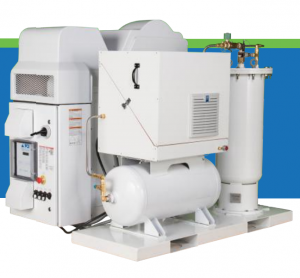
Agriculture
March 8, 2024
Implemented by
Pacific Consolidated Industries
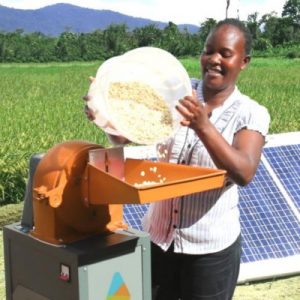
Agriculture
September 18, 2024
Implemented by
Agsol

Agriculture
September 27, 2024
Implemented by
PATH
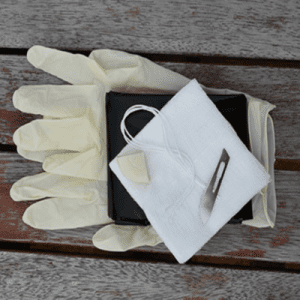
Agriculture
September 27, 2024
Implemented by
Birthing Kit Foundation
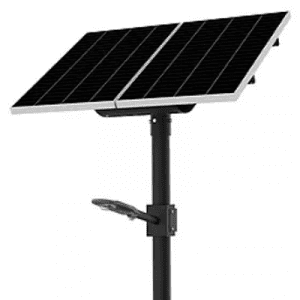
Agriculture
January 19, 2024
Implemented by
Solar Street Lights Africa
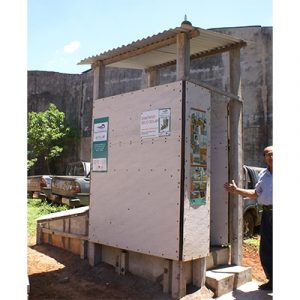
Agriculture
January 17, 2024
Implemented by
Centro de Desarrollo del Habitat y el Medio Ambiente (CEDES/Habitat)
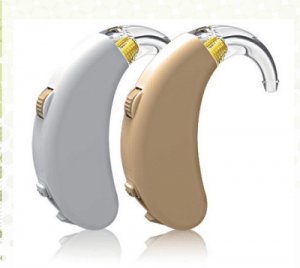
Agriculture
December 7, 2023
Implemented by
Solar Ear
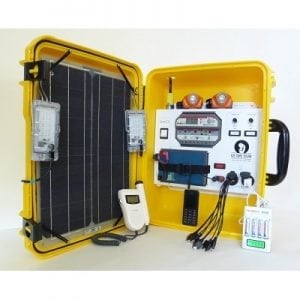
Agriculture
January 5, 2024
Implemented by
We Care Solar
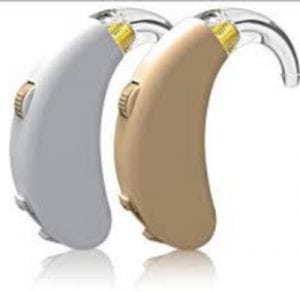
Agriculture
December 11, 2023
Implemented by
Solar Ear
Have thoughts on how we can improve?
Give Us Feedback